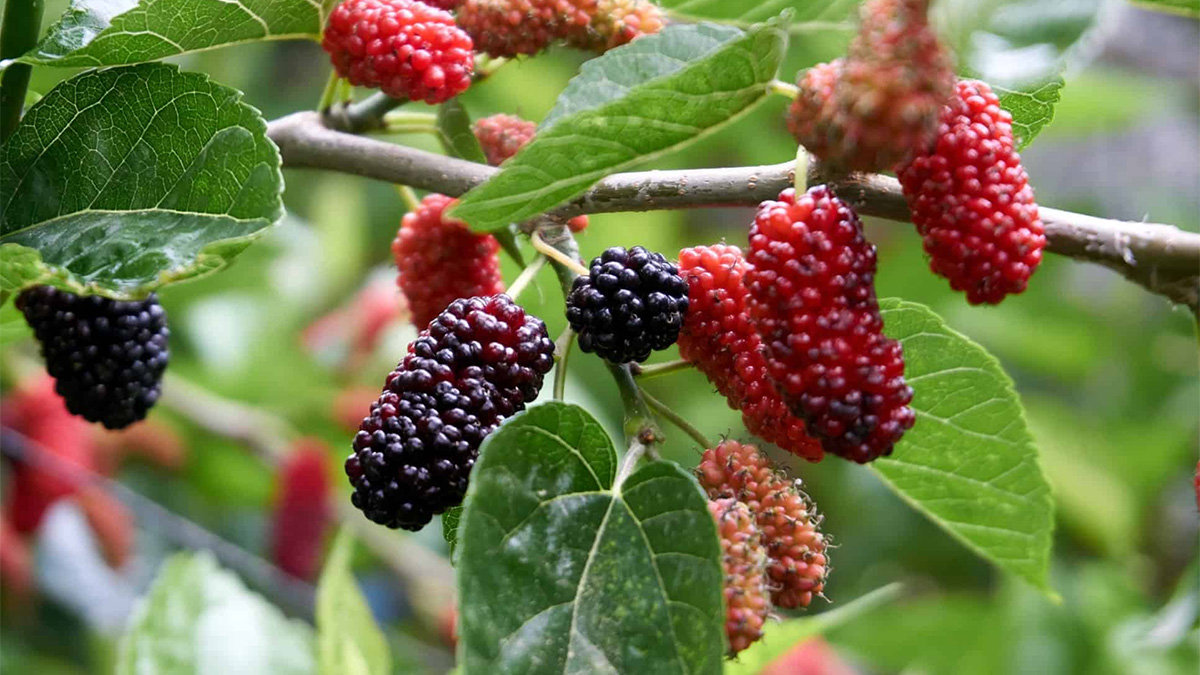Mulberry Trees: A Sweet Addition to Any Backyard

Mulberry trees offer more than just delicious fruit. Fast-growing and low-maintenance, they provide shade, beauty, and an abundant summer harvest, making them a practical and rewarding addition to any backyard.
Why choose a mulberry tree for your backyard
Mulberry trees are a rewarding choice for home gardeners seeking both beauty and function. These trees provide sweet berries, dense summer shade, and require little maintenance once established. Their fast growth and adaptability make them suitable for a variety of landscapes, from suburban yards to rural homesteads.
Unlike many fruit trees, mulberries thrive without extensive pruning or fertilizing. Their berries attract both humans and wildlife, making them a charming feature for family-friendly backyards. Whether you’re interested in fresh fruit or simply adding a graceful shade tree, mulberries are an excellent option.
Different types of mulberry trees
White mulberry (Morus alba) is the most widespread species in the USA and is known for its tolerance to various soil types and climates. Its fruit can range from white to purple-black, and the tree itself grows rapidly. Red mulberry (Morus rubra) is native to North America and produces deep red to black berries that are favored for their rich flavor.
Black mulberry (Morus nigra) stands out for its large, sweet berries and compact growth habit, making it ideal for smaller gardens in warmer regions. Gardeners can also choose from dwarf or weeping cultivars that offer ornamental value alongside smaller harvests. Selecting the right type depends on your space, climate zone, and preference for berry size and taste.
How to plant a mulberry tree
Mulberries grow best in full sun, so choose a planting site that receives at least six hours of direct sunlight per day. They tolerate a variety of soils but prefer well-drained soil with a neutral to slightly acidic pH. Avoid low spots that stay soggy after rain, as mulberries dislike waterlogged roots.
Plant your tree in early spring after the last frost. Dig a hole twice as wide as the root ball to encourage outward root growth but avoid planting too deep. Place the tree so that the top of the root ball sits level with the surrounding soil. Fill in with loose soil, water thoroughly, and apply mulch around the base to conserve moisture and suppress weeds.
Caring for your mulberry tree
Water your young mulberry tree regularly during its first two years to help establish a strong root system. After that, watering is typically only necessary during prolonged dry spells. Deep, infrequent watering promotes deep root growth, making the tree more resilient to drought.
Mulberries rarely require fertilizer, but an annual application of compost or a balanced fertilizer in early spring can encourage healthy growth and fruiting. Prune in late winter to remove dead branches, shape the canopy, and control overall size. Minimal pruning is needed beyond basic maintenance.
Harvesting and using mulberries
Mulberries begin fruiting as early as the third year and can produce heavy crops by year five. Harvest typically occurs in early to midsummer, depending on the variety and your climate. The easiest way to gather ripe berries is to shake branches gently over a tarp or sheet, as the fruits drop readily when mature.
Use mulberries fresh in desserts, smoothies, and fruit salads, or cook them down for jams, syrups, and pies. They freeze well and can also be dried for long-term storage. Due to their soft texture, mulberries are best consumed or processed shortly after harvesting.
Common problems and how to manage them
Falling fruit can stain sidewalks, patios, and driveways, so avoid planting mulberry trees near high-traffic areas. If this is a concern, consider planting a fruitless variety, which offers the benefits of a shade tree without the mess.
Pests and diseases are generally minimal, but occasional issues like whiteflies, aphids, or powdery mildew may occur. These can be managed with organic treatments like insecticidal soap or neem oil if needed. Seedlings from dropped fruit can pop up in surrounding areas, so monitor for volunteer trees and remove them promptly to prevent unwanted spreading.
Conclusion
With minimal care and reliable fruit production, mulberry trees are a standout choice for home gardeners. Whether you’re growing for fresh berries or summer shade, a mulberry tree can transform your outdoor space into a productive and inviting retreat.
